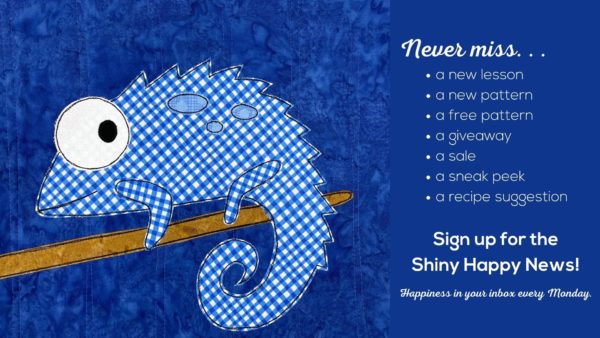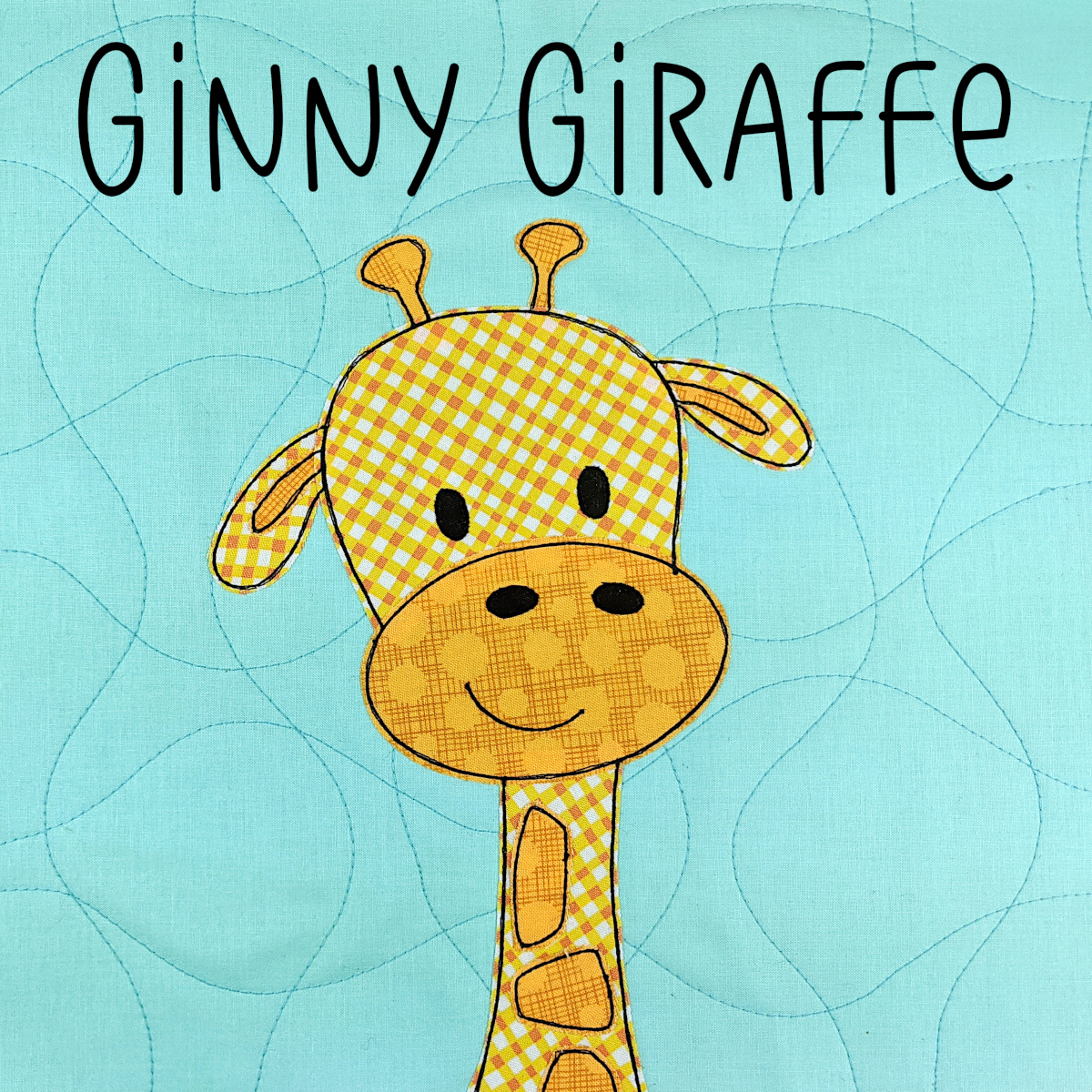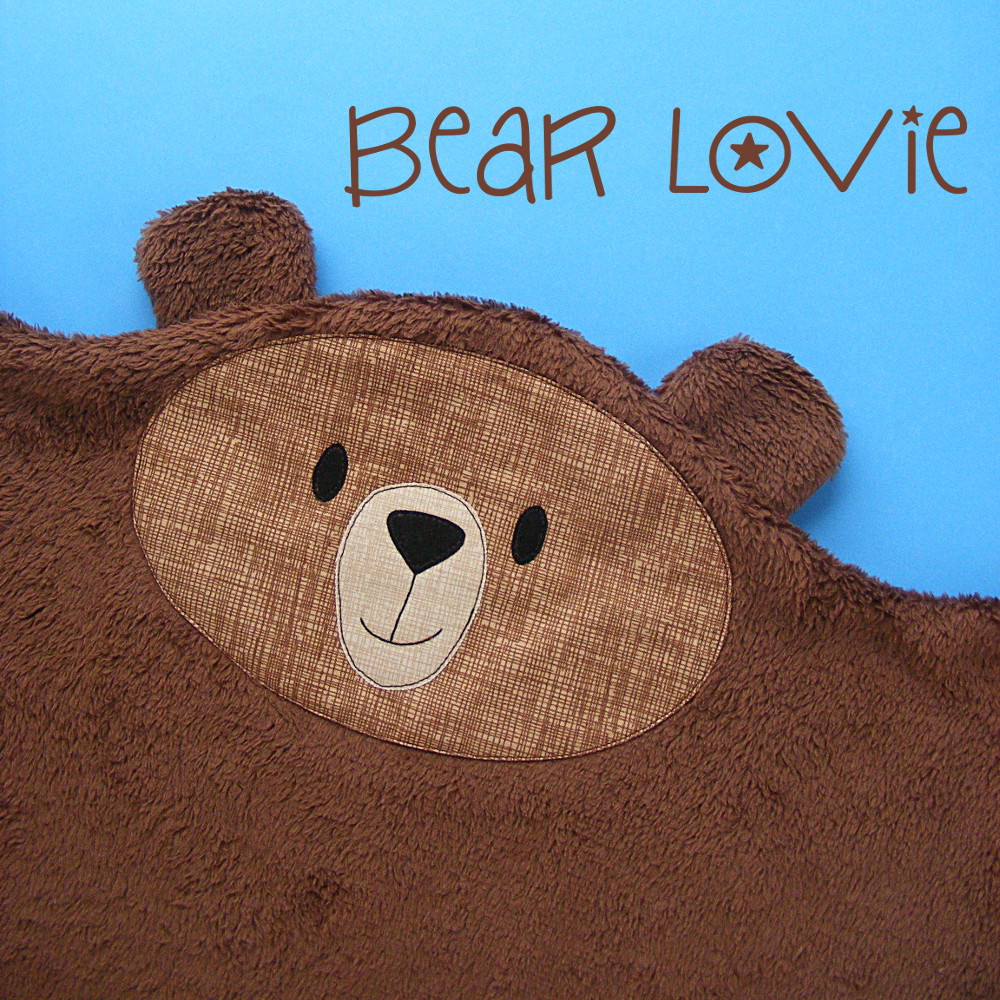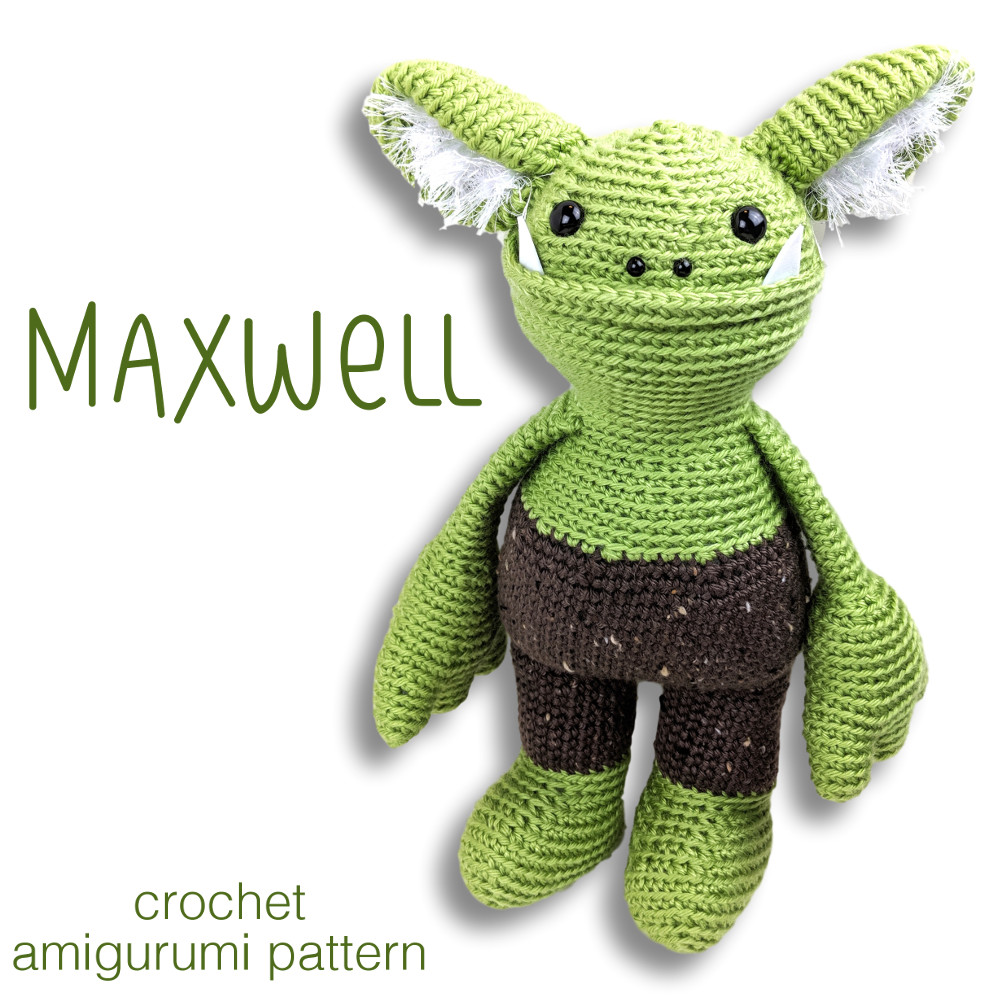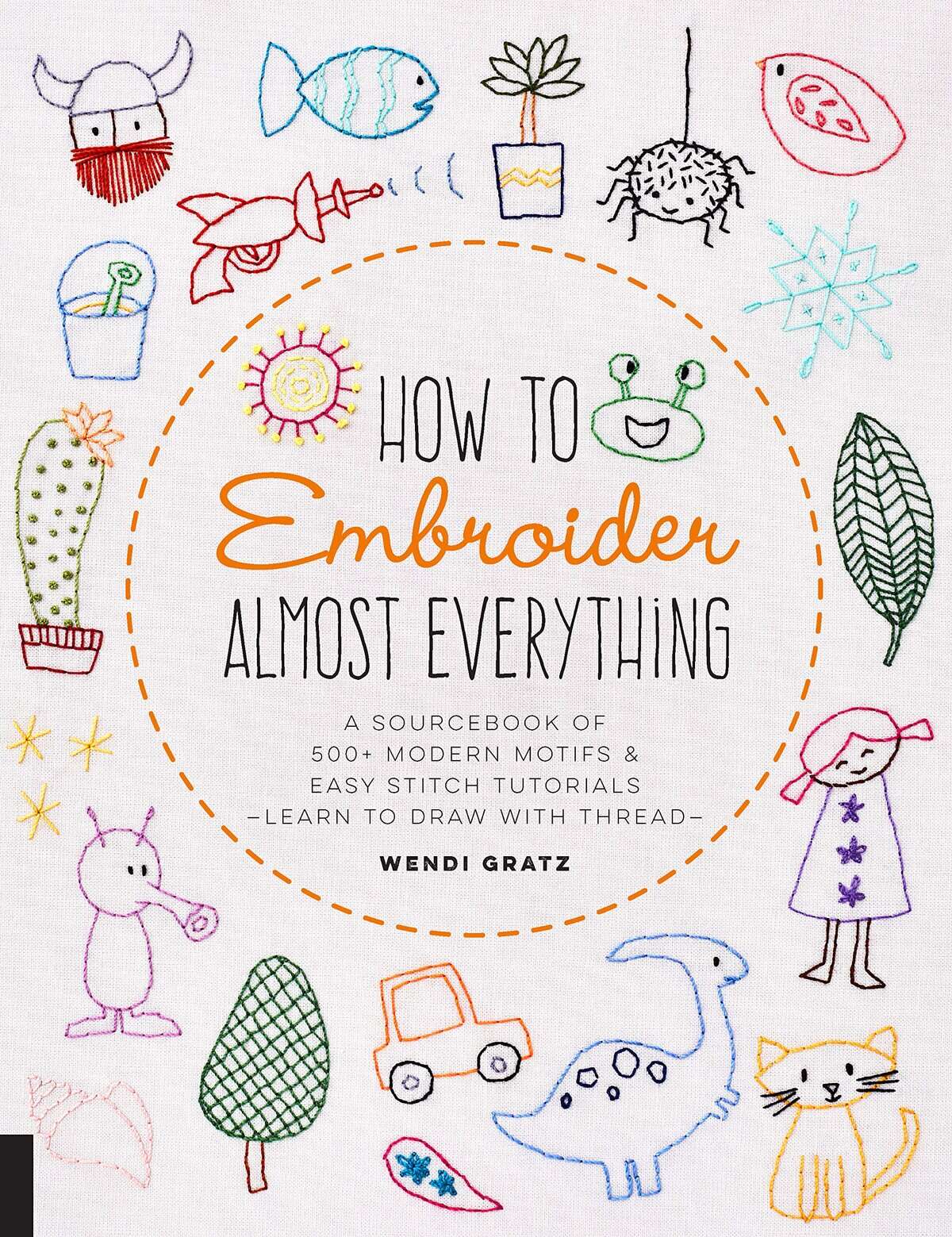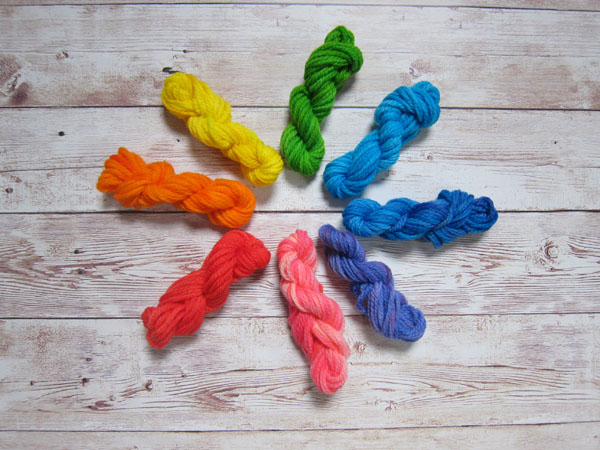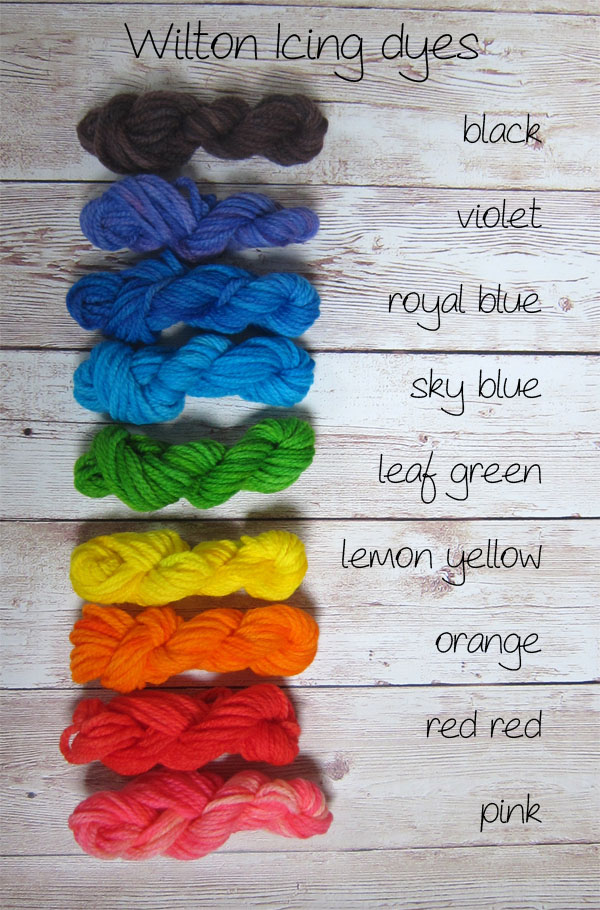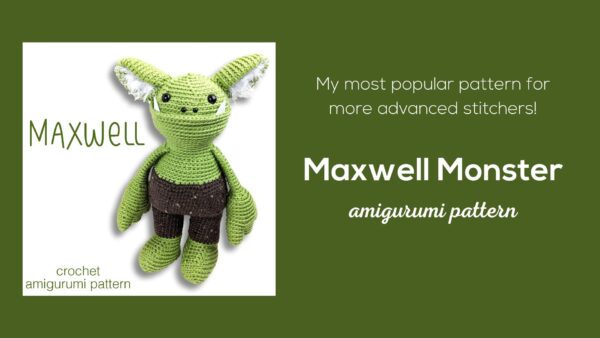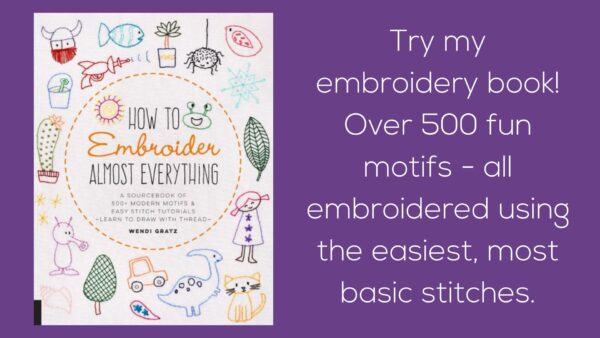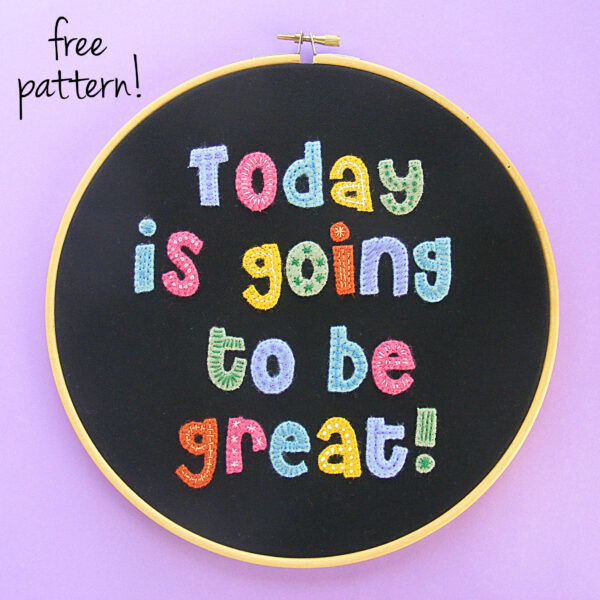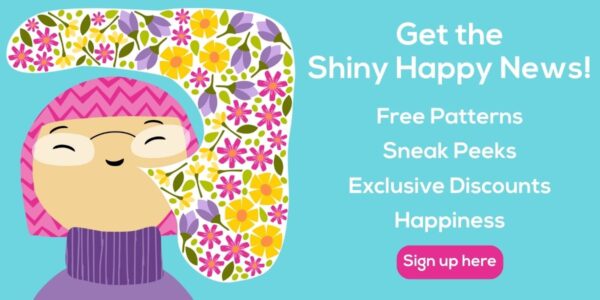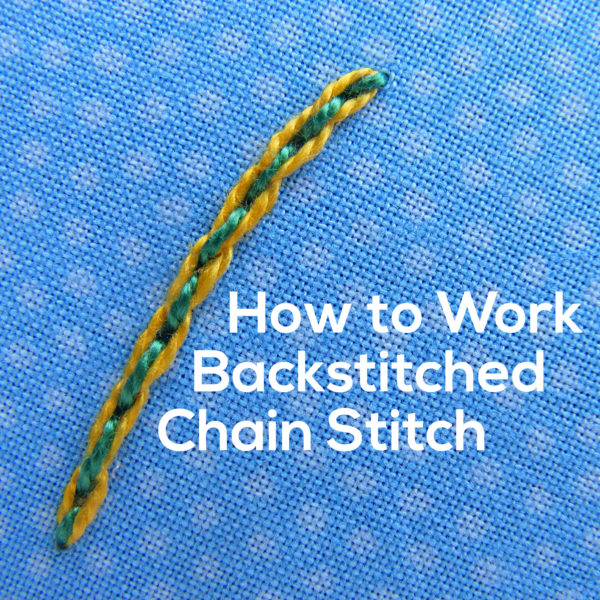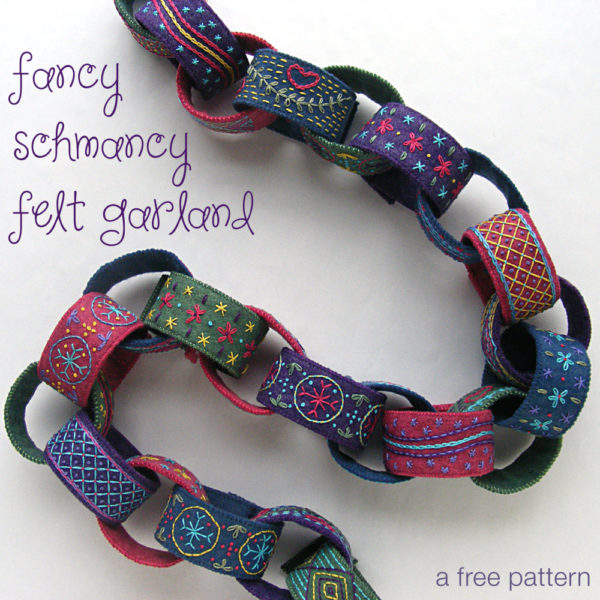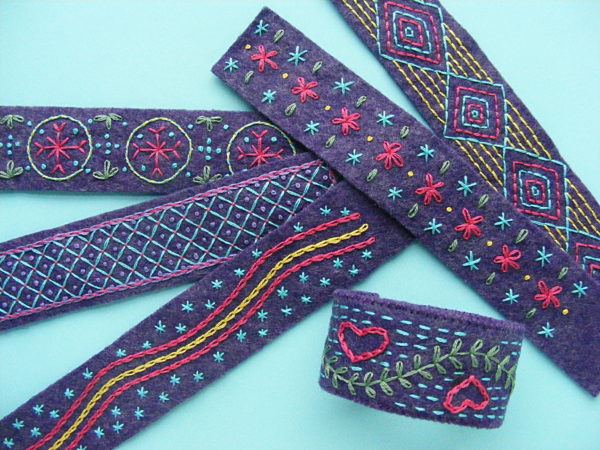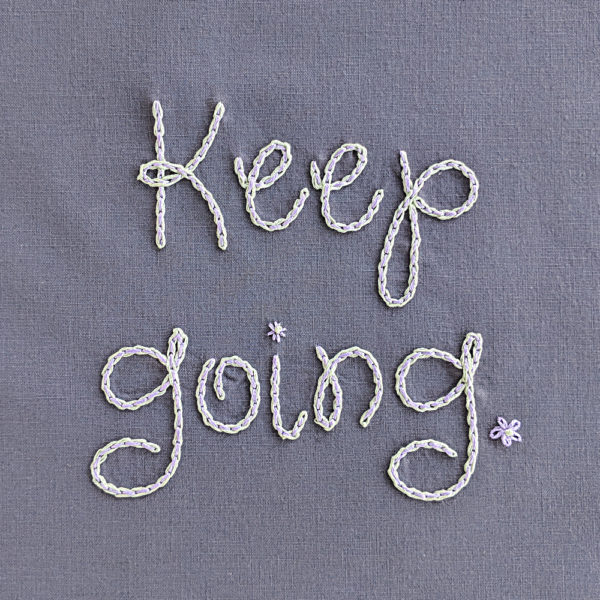I recently posted some photos of my newly tidy studio and a bunch of people asked for more details. A BUNCH of people. They all wanted to know how to declutter a craft room – exactly what I did.
I’m happy to share! Especially because this time I feel like I finally got it right. 🙂
Sure, I’ve “decluttered” before – but only with moderate success. This time I swore things would be different – and they were!
The number one change in my approach was a change in my attitude. Instead of asking “What can I get rid of?” I asked “What do I want to keep?”
On the surface that seems like it’s really the same question – but the subtle difference was key for me. First, let’s look at a before photo. It’s not taken from the same angle (it’s actually from the other side of the room) but it’ll give you a pretty clear picture of what things looked like.
And this was a good day! Every horizontal surface is full of stuff. There are plastic tubs stacked under my sewing table and in front of my storage shelves. There are permanent piles of stuff stacked on the corners (out of the way, right?) of my work tables. There is stuff everywhere – and I wasn’t using even close to half of it.
No more!
Here’s what I did. . .
Start with one thing. The experts say to do one room at a time – but even that was too much for me. I tackled one piece of furniture at a time.
Remove everything from that piece of furniture. Stack it on the floor, pile it on a table – whatever you have to do to get down to an empty piece of furniture. As you unload, you’ll spot some things you know you need to get rid of. Bag them up if they’re trash, box them for donating – go ahead and get rid of them now. But know that this is the easy stuff – things like the jar of bobbins that went to a sewing machine I got rid of over ten years ago, or the water damaged tablet of nice drawing paper. This is where I’ve stopped before – the things with an easy reason to get rid of them. This time I went deeper.
Clean it. Clean it really well. Dust it, polish it, vacuum out all the weird nooks and crannies full of Cuddle Fleece fuzz. Make it look (and feel) like a new piece of furniture.
Now – start “shopping” in that pile of stuff. Pull out the things that you actually WANT. The knick-knacks that make you really happy when you pick them up. The supplies that you love to use. I used the word shopping very deliberately. If you were strolling through Joann’s and you saw this stuff – how much of it would you actually put in your cart and buy today? Probably not much.
The best example of this was when I went through my yarn bin. I don’t use much yarn. I’ll crochet something every once in a while, and sometimes I need yarn for hair or a tail – but that doesn’t add up to much. You wouldn’t know that from looking at the huge (overflowing – the lid wouldn’t fit on it) bin of yarn I had. I called Jo in (because she crochets sometimes) and we dumped it out on the floor. We very quickly picked the 5-6 skeins of yarn we actually liked – and got rid of everything else. Yarn in ugly colors, scratchy yarn, fluffy yarn that I loathe crocheting with – it all went away. And I breathed a huge sigh of relief!
Don’t ignore the emotional difficulty. Decluttering like this can be hard because it often means letting go of dreams. I had kept a bunch of small skeins of eyelash yarn (given to me by someone who was decluttering – ha!) because I thought I might someday use them in amigurumi. They’d be cute manes or tails, or be great for little hedgehogs or porcupines. The problem with that is that I don’t crochet amigurumi. I could learn – and I’d like to – but the realistic side of me knows that I probably won’t. Or – to be more precise – I will definitely NOT take the time to learn every single craft I’ve hoarded supplies for for the last two decades. I already sew, quilt, and embroider – I’m very unlikely to also learn amigurumi, knitting, jewelry-making, garment sewing, printmaking, watercolor painting, acrylic painting, and all of the other kajillion crafts I was storing supplies for, just in case I decided to try them out. And if I really do decide to crochet a cute little hedgehog, I will go out and buy the single skein of grey eyelash yarn I will need. None of the 20 skeins I had were grey anyway. 😛
Put the things you really want back where they go. Make sure they’re stored in a way you can easily access them – both to get them out when you want them, and to put them away again when you’re done. No storing things stacked on top of other things!
Move on the the next room/piece of furniture.
I did this over and over again, touching every single thing in my studio. And I mean every single thing. I went though my pencil cups and got rid of the hard pencils, the pencils with hard erasers, the pencils that were too short to get out of the cup without digging. I touched every single thing in the room and asked myself if I really wanted it. Not if I could think of a reason to keep it – you can always think of a reason to keep something. The question is – Do you really want it?
Two more decluttering tips for you. . .
Be fast. You know in your gut if you really want something. As soon as you touch it – pay attention to your gut. Do not start listening to your head. Your head will start telling you, “Well – you could use it for this or that or some other thing.” That’s what you told yourself when you picked it up at a rummage sale 10 years ago and you haven’t used it yet. You’re probably not going to. Get rid of it! If you find yourself dithering, you don’t really want it – but for some reason you feel bad about getting rid of it. Which brings me to. . .
Be ruthless. Some of your best decisions will be the hardest. Letting go of some things means letting go of dreams or might-have-beens. Sometimes there’s a lot of guilt attached – money spent on supplies for a craft you ended up not enjoying, time and money spent on a partially-finished project that’s been sitting on the corner of your sewing table for years. Sometimes people you love give you things you don’t like very much, but you feel like you need to keep them. It’s all hard – but I feel so good about every tough decision I made! Especially getting rid of the things that had guilt attached to them – talk about burdens lifted!
And now – I work in a lovely, inviting space that I’m not embarrassed to show you. My supplies are easy to reach and easy to put away. I don’t have to clear off a corner of my table to work on a project.
I have never experienced this before. Never!
But I love it – and I find that it’s spreading. I recently started on my kitchen – one cabinet at a time – and the results are fantastic. I can’t wait to finish that room and move on to my closet! I’ll have to move more slowly – decluttering my studio was basically a full-time job for a week – which means the results aren’t quite as dramatic, but they’re soooo satisfying. 🙂
So there you have it – my tips for how to declutter a craft room. Have fun!

Here are handy links to all the posts about quilting tools and supplies.
Sewing Machine
- My Sewing Machine and Why I Love It
- How to Choose a Sewing Machine for a Beginner
- My Favorite Sewing Machine Feet
- Basic Sewing Machine Maintenance
Iron
Rotary Cutting Tools
- My Favorite Rotary Cutting Tools
- How to Use a Rotary Cutter and Ruler
- How to Clean a Fuzzy Cutting Mat
Scissors
Other General Sewing Room Supplies
- Easy Pattern Weights (a free pattern)
- Pincushion (a free pattern)
- Needle Cushion (a free pattern)
- Sewing Machine Cover (a free pattern)
- How to Make a Design Wall
- How to Make a DIY Cutting Table
One More Hugely Popular Post that Seems to Fit Here Better than Anywhere Else
Return to the Let’s Make a Quilt main Table of Contents.
Move on to the posts about choosing your quilt pattern.

